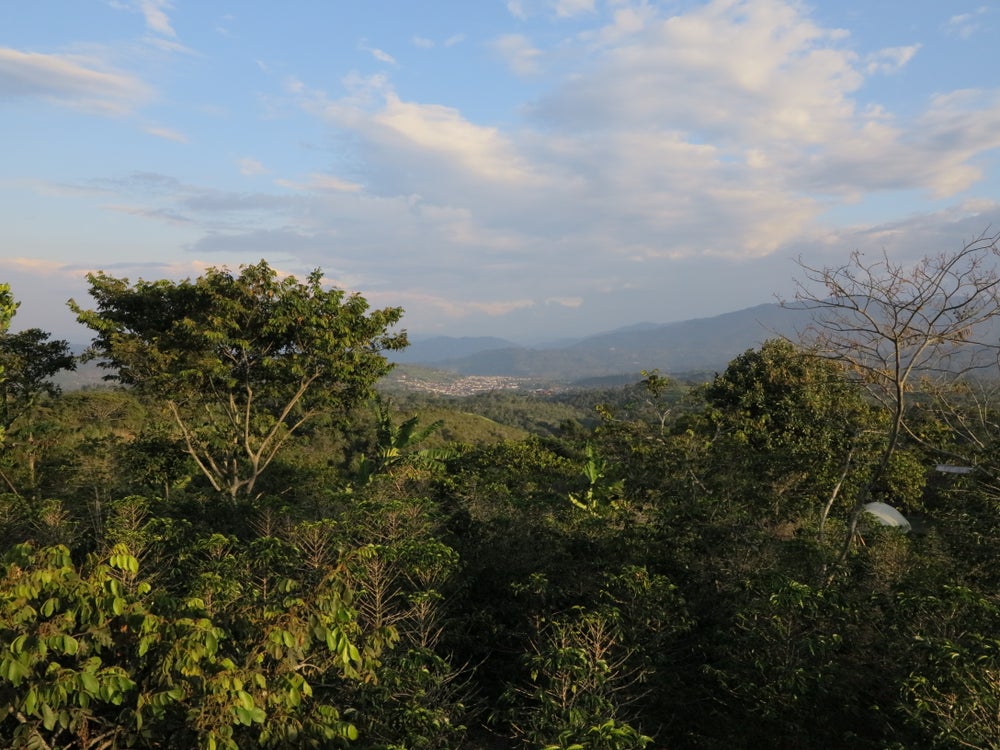About This Coffee
The Asociación de Productores, Transformadores y Exportadores de Café Del Municipio de Aipe (Asopcafa) is a young organization that ismaking great coffee strides in Colombia’s famous coffee-growing Department of Huila. Asopcafa was formed in 2013 by 88 coffee growers living in and around the municipality of Aipe. The growers, above all, sought to promote agriculture (in particular, coffee) as a means of human development in the region.
Like much of rural Colombia, Huila was heavily affected by the Colombian Armed Conflict of the 1990s and early 2000s. FARC guerrillas took over huge swaths of Northern Nariño and neighbouring Tolima & Cauca, creating a corridor of migration into Huila as families fled FARC control and the ensuing violence. Governmental presence was limited, the FARC had a heavy hand in the local economy, and families and communities had great difficulties making ends meet. Hardly anyone was able to invest in their coffee production.
When the Colombian government began peace talks with FARC guerilla leadership in the early 2010’s, several international and national NGOs and other stakeholders began to develop projects in the region to help communities forge new paths to economic well-being. After several years of working together with various partners, Asopcafa succeeded in obtaining Organic and Fair Trade certifications. They also began working with companies such as InConexus, who have helped them place their offerings on the specialty market. These actions have resulted in the group reaching demanding international markets and, thus, earning higher prices for their coffees.
Harvest & Post-Harvest
Each member of Asopcafa farms around 3.5 hectares (on average) and is responsible for processing their own coffee on their individual farms. Coffee is selectively hand harvested, usually with the whole family pitching in to help, and then floated or sorted to remove any underweight or damaged cherries. The coffee is then pulped on small pulpers and fermented in tanks (usually tiled) for around 30 hours, depending on ambient temperature. After fermenting, the coffee is washed well in fresh water and is delivered to dry on solares (covered drying ‘tents’ or greenhouses) or rooftop elbas. Here the coffee will dry and be raked regularly for 12 to 18 days, or until it reaches around 12% humidity.
About Huila
The Huila region is one of the most well-known coffee growing areas of Colombia. The Department of Huila has a population of 1.125 million and is located in the southwest of the country. The capital of the department is Neiva, a city of about 380,000.
Along with Cauca and Nariño, Huila is one the three departments where the Colombian Massif is located. A massif is a group of mountain ranges and the Colombian Massif, which is known locally as Nudo de Almaguer, provides up to 70% of safe drinking and agricultural water for the Colombian population.
The Magdalena River, Colombia’s largest river, runs through the region, providing plenty of water for coffee farming and generating (directly and indirectly) up to 86% of Colombia's GDP. The mountain range also features the fertile volcanic soil so typical to the Andean Mountains.
Coffee in Colombia
Colombia has been producing and exporting coffee renowned for their full body, bright acidity and rich aftertaste, since the early 19th century.
Colombia boasts a wide range of climates and geographic conditions that, in turn, produce their own unique flavors in coffee. This also means that harvest times can vary quite a bit. In fact, between all its different regions, Colombia produces fresh crop nearly all year round.
The increasing focus on the specialty industry is changing the way traders and farmers do business. It is becoming more common for farmers to isolate the highest quality beans in their lots to market separately. These higher-quality lots are often sold under specific brands or stories.
Besides its wide variety of cup profiles, Colombia has quickly expanded its certification options over the past 10 years. The most common certifications available are Fairtrade, Rainforest Alliance, UTZ and Organic.

